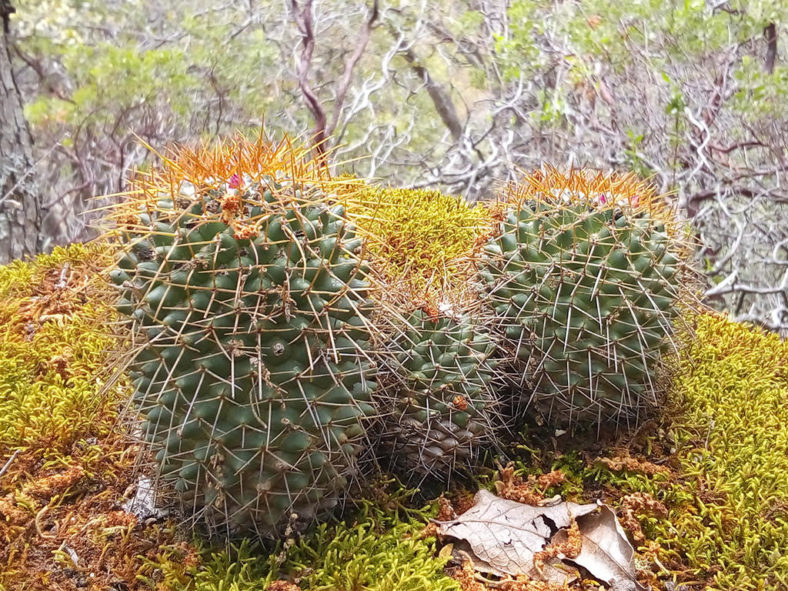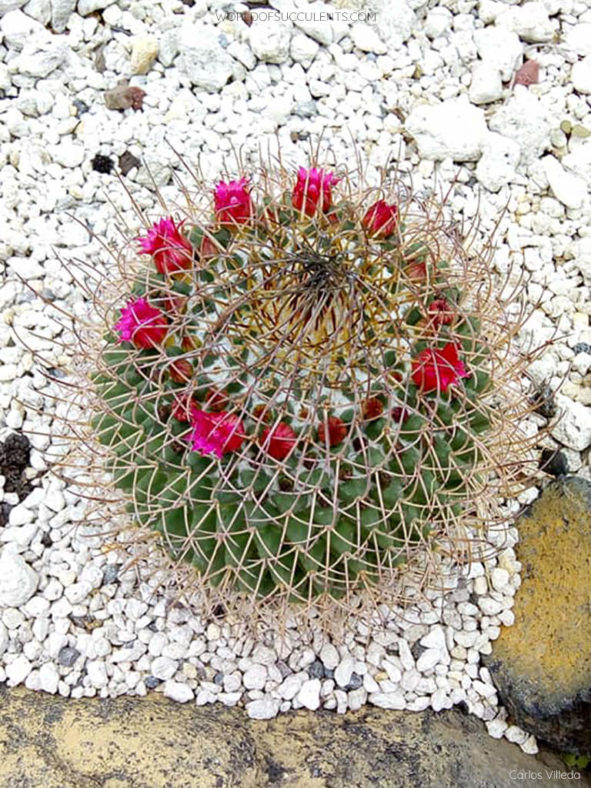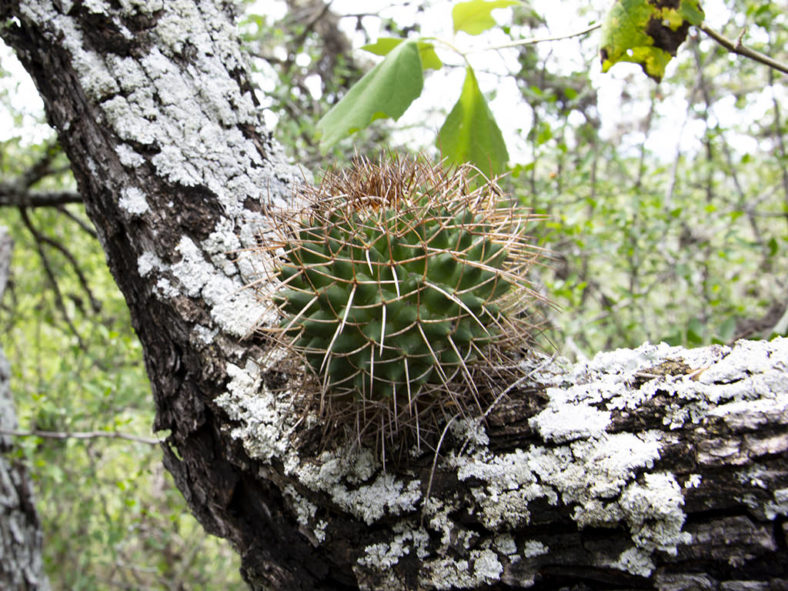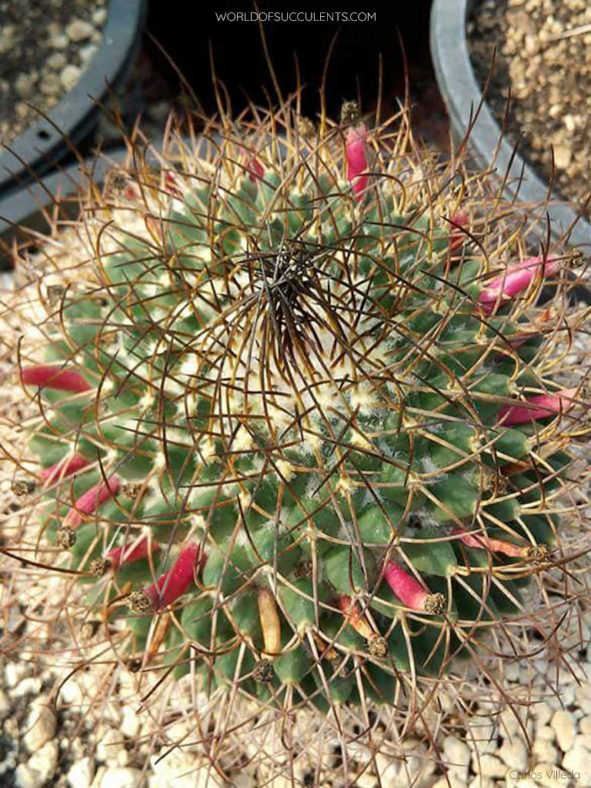Scientific Name
Mammillaria polythele subsp. obconella (Scheidw.) D.R.Hunt
Synonym(s)
Cactus obconella, Mammillaria obconella, Neomammillaria obconella
Scientific Classification
Family: Cactaceae
Subfamily: Cactoideae
Tribe: Cacteae
Subtribe: Cactinae
Genus: Mammillaria
Etymology
The specific epithet "obconella (ob-KON-el-luh) means "like a small inverted cone; inversely club-shaped" and refers to the shape of the stem.
Origin
Mammillaria polythele subsp. obconella is native to northeastern Mexico (Hidalgo, Queretaro, and Guanajuato).
Description
Mammillaria polythele subsp. obconella is a small cactus with an erect stem covered with prominent conical tubercles tipped with four unequal central spines arranged in the form of a cross. Initially, the stem is spherical, becoming columnar with age, and can grow up to 24 inches (60 cm) tall and 6 inches (15 cm) in diameter. The spines are straight and yellowish when new and become somewhat recurved and gray as they age. They can measure up to 0.8 inches (2 cm) long.
The flowers are rose-colored to pinkish-purple and appear in spring in a ring around the top of the stem. The fruits are club-shaped, dull red or purplish, and contain tiny dark brown seeds.

How to Grow and Care for Mammillaria polythele subsp. obconella
Light: Plant this cactus in an area of your garden that receives 4 hours of direct sunlight daily. If you are growing M. polythele subsp. obconella indoors, place it near the brightest window in your home or office to ensure your cactus gets enough light. Place the pot on the balcony or in the garden for extra light from spring to fall if possible.
Soil: M. polythele subsp. obconella requires a soil mix that provides root aeration and good drainage, whether grown outdoors or indoors. You can use a commercial cactus potting mix or create your own.
Temperature: This cactus is heat tolerant but is not a cold-hardy plant. M. polythele subsp. obconella can withstand temperatures as low as 25 °F (-3.9 °C). USDA Plant Hardiness Zones 9b to 11b, 25 to 50 °F (-3.9 to 10 °C).
Watering: From spring to fall, water deeply and wait for the soil to dry before watering again. Never let the pot sit in water. Suspend watering in the winter.
Fertilizing: M. polythele subsp. obconella can benefit from fertilizing during the growing season. Apply a water-soluble fertilizer for cacti and other succulents. Suspend feeding during the winter when the plant goes dormant.
Repotting: Repot M. polythele subsp. obconella into a slightly larger pot every two or three years. The best time to repot is late winter or early spring, but the process can be done almost any time of the year.
Propagation: There are two easy ways to propagate M. polythele subsp. obconella: by seeds or by dividing offsets. The best time to remove offsets is in spring and summer. Sow the seeds in late spring or summer.
Learn more at How to Grow and Care for Mammillaria.
Toxicity of Mammillaria polythele subsp. obconella
M. polythele subsp. obconella is considered non-toxic to both humans and pets.
Links
- Back to genus Mammillaria
- Succupedia: Browse succulents by Scientific Name, Common Name, Genus, Family, USDA Hardiness Zone, Origin, or cacti by Genus
Photo Gallery
Click on a photo to see a larger version.


